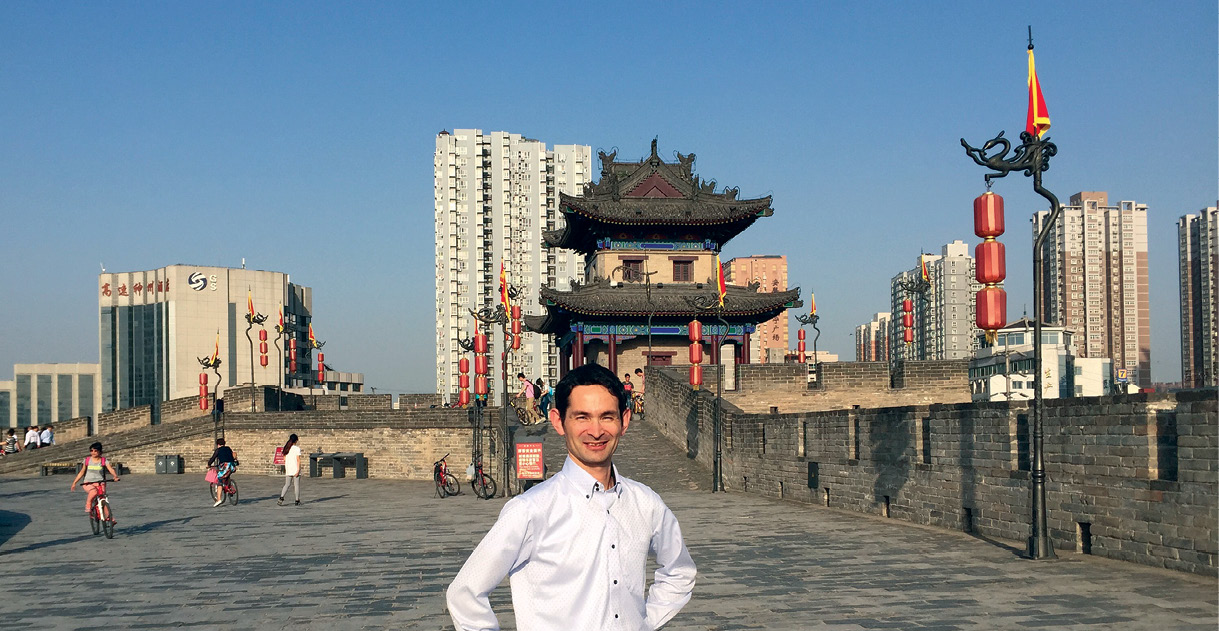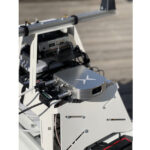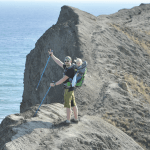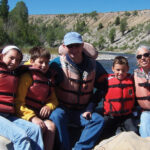Dr. Rui Hirokawa is Deputy General Manager, Space Systems Department, at Kamakura Works, Mitsubishi Electric Corporation. A fixture in today’s GNSS community, he manages several QZSS-related projects, including the centimeter-level augmentation service (CLAS), and has recently been deeply involved in the international standardization of high-accuracy GNSS.
Rui Hirokawa grew up in the Tokyo suburb of Nerima, near the city’s idyllic Syakujii Park. “From my home, it took about 20 minutes, on foot and by train, to get to the center of Tokyo,” Rui said. “I remember walking a great deal as a child, with my parents and my brother, going to the park, and always finding lots of interesting things to do.”
It was a typical residential setting for a boy growing up in Japan, but Rui’s family was anything but typical. His father, Mauricio Perlingeiro Crespo, came to the country from Brazil. “He studied philosophy at the University of Rio de Janeiro,” Rui said, “and, after graduating, he decided to move to Japan. When he arrived, he went to work teaching Portuguese at several universities around Tokyo.” One of these was the Sophia University. Rui’s mother, Kazuko Hirokawa Crespo, met Mauricio while working there as a secretary.
“My father was passionate about bringing Latin culture to Japan,” Rui said. “He created a small publishing company, selling foreign-language books, many of which he translated into Japanese.” Life for this young and lively Brazilian, immersed in a strange culture in a distant land, was not always easy, but Mauricio was optimistic and he persevered. “Today, as an engineer, I am also optimistic,” said Rui, “and I believe that’s thanks to my father’s influence.”
Like his father, Rui’s mother, who studied literature at Japan Women’s University, was also a book lover. “She had a great knowledge of literature,” Rui said, “and, as a boy, I took her example and read many novels. My mother was a very kind and caring person. She kept me and my brother busy and happy.”
A key experience for young Rui was a trip he took with his family when he was eight. “We traveled to the opposite side of earth, to Brazil, where my father was born. We stayed about a month in Sao Paulo, and it was the first time that I came into contact with a different culture. I was not able to speak the language, as my father spoke Japanese very well and he always spoke it in our home.”

Higher Vision
A happy kid known for his smile, Rui played soccer and baseball and built model planes and ships. He remembers watching “Star Wars” for the first time and seeing the images of Jupiter and Saturn sent back by the Voyager probes.
“That was an exciting time for me,” Rui said. “It felt like the space age had arrived. And then I remember watching “Cosmos” on TV, produced by Professor Carl Sagan. It was so exciting to learn about the physical world, the life of stars.” Rui credits his older brother, Mario, for encouraging his fascination with aeronautics: “My brother and I used to love to watch the sky, to observe the aircraft flying overhead. When I was a child, I wanted to be a pilot. Then, when I realized my eyesight was not up to standard, I changed my dream. Instead of flying aircraft or spaceships, I would become an engineer and build them.”
Having proved himself an excellent physics and mathematics student in high school, Rui had set the stage to begin his rise. He enrolled at the University of Tokyo, which he chose for its highest-quality aerospace engineering program. While there, he carried out research on flight path control and optimization for hypersonic vehicles under Professor Kannichiro Kato.
By 1994, he had been awarded a Bachelor’s and a Master’s degree and was ready to join the professional ranks. Hirokawa was quickly hired as engineer in the Defense Engineering Department at Kamakura Works, Mitsubishi Electric, in Tokyo, where he worked in flight control, guidance, navigation systems and simulator design. “All of this was in the context of defense applications,” Hirokawa said, “such as air-to-air and surface-to-air missile systems. Challenging topics included resilience against jamming and precise guidance under measurement noise.”
Within a few years, Hirokawa would be introduced to the world of GNSS, but while exciting things were going on in his professional life, something of a very different kind, and at least as exciting, was taking place in another area. “I met Eriko in 1996,” he said, “at a party hosted by my friends. I was greatly affected by her bright personality. She introduced me to a different world, with her unique ideas and her tastes in music and movies, so very different from my own. We were married in May 1999, and she has never ceased to enrich my life.”
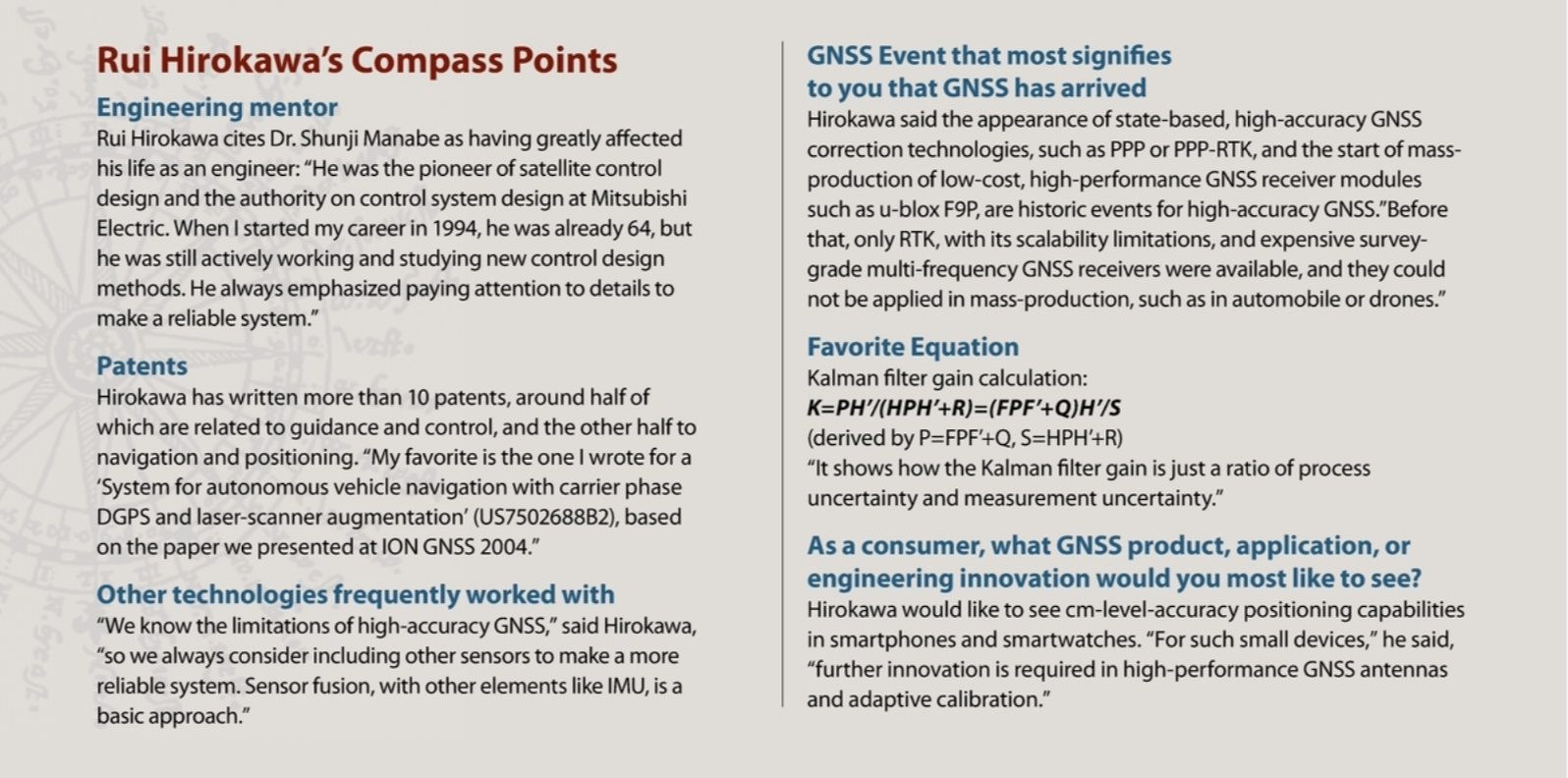
New Impetus
“During that early part of my career, much of my work in flight control and guidance involved the application of the non-linear Kalman filter for highly dynamic systems,” said Hirokawa. “Then, in 2001, Mr. Yanagisawa, who was our Senior Chief Engineer, was looking for a person specialized in estimating dynamic motion for a new project, to develop an RTK-GNSS-based application for measuring the dynamic motion of a car with centimeter-level accuracy.”
Hirokawa had as yet gained only a basic knowledge of GNSS, but his ability was evident and he was selected as chief engineer for the project. “This was just after the termination of GPS selective availability,” he said, “and my feeling was that we could expect a positioning accuracy of about 10-100 meters. We had no GNSS experts with us at that time, and I didn’t know about the carrier phase GPS positioning technology, so I had to build a high-accuracy GNSS technology from scratch.”
Hirokawa applied the model-based design (MBD) approach for the GNSS application, just as he had done for guidance and control system design. “We did a couple of field tests using state-of-the-art RTK-GPS receivers. I realized that availability and reliability would be challenging for high-accuracy GNSS, so I concentrated my efforts on sensor fusion, using tightly coupled GNSS/INS combined with dead-reckoning, LiDAR and SLAM-based positioning technologies to improve the availability of positioning.”
The project would become an important first step in the field of high-accuracy GNSS, resulting in a new navigation unit for an unmanned ground surveillance vehicle. Hirokawa debuted on the international GNSS scene when he presented this work at ION GNSS 2004.
From 2005, now manager of his own unit at Kamakura Works, Hirokawa turned his attention to an important defense-related project, leading a team of ten engineers in the development of a new UAV-UGV system. “For precise attitude determination, we developed the multi-antenna carrier-phase GNSS/INS algorithm,” he said. “The robustness of object recognition using optical and LiDAR sensors was also challenging. In 2007, we completed the development of a small, 1.7-meter-wing-span UAV for surveillance applications, using a new navigation technology with sensor fusion.”
The guidance, navigation and control unit had to be as small and as robust as possible. The team created a tiny 22-gram flight controller board with software. Hirokawa himself designed the GNSS/INS elements for position, velocity and attitude determination. “We needed a low-order, sensor-fusion algorithm, and I also developed a multi-antenna GNSS/INS algorithm for UAV, based on the MMS algorithm,” he said.
During that same period, Hirokawa was involved in the development of a high-accuracy mass-market GNSS locator called AQLOC. As a side note, the latest version of this product, available since 2019, supports the QZSS CLAS service, and nationwide open PPP-RTK, providing centimeter-level positioning accuracy in one minute.
Hirokawa also returned to his old stomping grounds at the University of Tokyo, earning a Ph.D. in aerospace engineering under Professor Takeshi Tsuchiya in 2009.
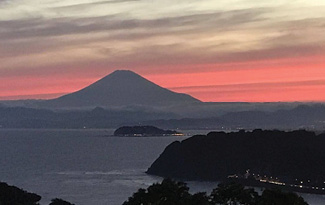
The QZSS Years
Since 2013, Hirokawa has spent most of his time working on Japan’s Quasi-Zenith Satellite System (QZSS) program. He was involved as the chief technical reviewer and adviser from the beginning of the project. He currently serves at Kamakura Works as Deputy General Manager, Space Systems Department, overseeing a department of about 150 engineers; he is also QZSS Project Manager.
“The most challenging project is our QZSS centimeter-level augmentation service (CLAS),” he said. “This is the PPP-RTK correction service broadcast on the QZSS L6 signal, the world’s first nationwide open PPP-RTK service. The system is quite large, including ground systems, the large-scale CORS network, and the GNSS satellites. Correction data is broadcast across more than 40,000 square kilometers in Japan, with a very limited data rate, under 1700bps. Conventional network RTK requires more than 1Mbps for a nationwide service, so we are applying a new and innovative technology to reach data compression of 1:1000.”
One underlying goal for Hirokawa’s team is to support multi-GNSS and multi-signal capabilities, including GPS L1/L2/L5, QZSS L1/L2/L5, and Galileo E1/E5a. “Developing user equipment was a major challenge because there was no existing GNSS receiver in the market supporting PPP-RTK service. So we had to define the interface between our infrastructure and GNSS receivers. For network RTK, RTCM MSM was an industrial format, but the standardization of RTCM SSR was not yet completed, so we developed an open format called Compact SSR, compatible with and more than 70% more efficient than RTCM SSR.” Europe’s Galileo program has selected a Compact SSR-based format for its global open PPP High-Accuracy Service (HAS).
The CLAS user community is growing steadily, in automotive, maritime, drone and agriculture applications. “Within the coming year, the Nissan Ariya will be equipped with a high-accuracy GNSS locator supporting QZSS CLAS,” said Hirokawa. “It will be the first mass production of a QZSS CLAS application, and a major milestone for the project. In the 2020s, other GNSS, such as Galileo and BDS, will support satellite-based open PPP service, and high-accuracy GNSS positioning will become a commodity in the world.”
Most recently, Hirokawa has been collaborating closely with international partners on the standardization of high-accuracy GNSS. He was selected as co-chair of the ICG WG-S taskforce to improve interoperability between the different PPP services, and has been working on the problem, notably, with Ignacio Fernandez-Hernandez of the European Commission and Simon Reynolds of Geoscience Australia.
At ION GNSS+ 2020, Hirokawa and Fernandez-Hernandez presented a co-authored paper analyzing the characteristics and efficiency of several existing ope-format specifications for PPP/PPP-RTK services, and in which they proposed a general message format for satellite-based, open PPP/PPP-RTK services to maximize their interoperability.
Signal integrity and resilience against cyber attack are also important issues for high-accuracy GNSS. With Galileo’s OSNMA authentication signal currently in testing, QZSS is also planning to add an authentication capability for its own standard positioning service.

Day by Day
Just as he did when he was a young boy, Hirokawa still loves to scan the heavens and imagine. “Often, when I am out walking near my home,” he said, “which I do daily for exercise, I enjoy looking up at the sky. A bright moon might make me think about the Apollo missions of the 1960s and 70s, or about the tourist flights that will take people to the moon in the near future. I have very much enjoyed watching the Space-X rocket launches and landings on live stream or YouTube.
“I think I am just an engineer by nature. Even in my non-working life, my activities tend to lean in that direction. One of my hobbies is creating open-source software. I have been contributing to PHP, a well-known web scripting language, for more than 25 years, translating manuals and writing some useful code. I also like to design electric circuit boards, using free CAD.”
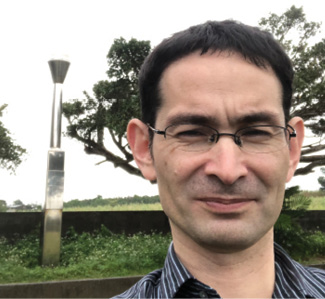
Rui’s father retired and closed his business in 2006, and, after living in Tokyo for more than 40 years, he and Rui’s mother decided to move to Brazil. In 2009, Rui and Eriko visited Rui’s parents in Sao Paulo, and also took in Rio de Janeiro and some other popular sites. These days, Rui mostly stays in touch with his parents by email, it being difficult to meet in person due to the great distance.
Back in Tokyo, Rui lives with his wife and her mother, enjoying their support in all his endeavors. “Eriko is always taking care to improve our lives,” he said. “She loves cooking, gardening, growing flowers and vegetables, and looking after our dogs. She is always smiling, and she makes me feel happy. My mother-in-law is also very supportive and I have time to enjoy life at home.”
On that note of peace and tranquility, we will leave Rui Hirokawa, but we will meet him again soon, we are sure, as his run of notable achievements in the world of GNSS has surely only just begun.

